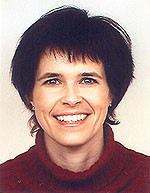Robova H, Rob L, Halaska MJ, Pluta M, Skapa P, Strnad P, Lisy J, Komar M. Gynecol Oncol. 2013 Jan;128(1):49–53. doi: 10.1016/j.ygyno.2012.10.002. Epub 2012 Oct 9. IF: 3.929

Department of Obstetrics and Gynaecology
Abstract
OBJECTIVE: The endpoint of this prospective study is to evaluate response rate, survival and toxicity of high-dose density neoadjuvant chemotherapy (NAC) in bulky IB cervical cancer.
MATERIAL AND METHODS: Between January 1998 and December 2009, 154 women were enrolled into study. Three patients were withdrawn. Of the 151 women, 119 had stage IB2 cervical cancer (78.8%) and 32 had stage IB1 cancer (21.2%) infiltrating the whole cervical stroma. Women received 3–4cycle cisplatin-75mg/m2 and ifosfamide-2g/m2 in cases of squamous-cell cancer or cisplatin-75mg/m2 and doxorubicin-35mg/m2 in adenocarcinoma every 10days and then underwent radical hysterectomy type III. Patients who had non-resectable disease underwent chemoradiotherapy.
RESULTS: The overall response rate (reduction of tumor volume more than 50%) was 78.8%. Reduction of tumor volume less than 50% was seen in 15.2%. Tumor progression during chemotherapy occurred in nine patients (6.0%). There were positive lymph-nodes in 26 patients (18.3%) of the 142 that underwent surgery. 38 women underwent adjuvant radiotherapy (26.7%). There were 26 recurrences (17.2%). After surgery 20 women recurred from 142 (14.1%) and after primary radiotherapy 6 from 9 women recurred (66.7%). 25 of 151 women died from disease (16.5%). At the time of the study, surgery was performed in 118 women 5 or more years ago, 19 of them died of disease. Five-year specific survival is 83.6%. Grade 3–4 neutropenia was found in only 7.3% of the women, and grade 3–4 thrombocytopenia were found in 1.3%.
CONCLUSION: High-dose density NAC appears to be feasible in the treatment IB bulky cervical cancer and toxicity is acceptable. Adjuvant radiotherapy was used only in 26.7%.